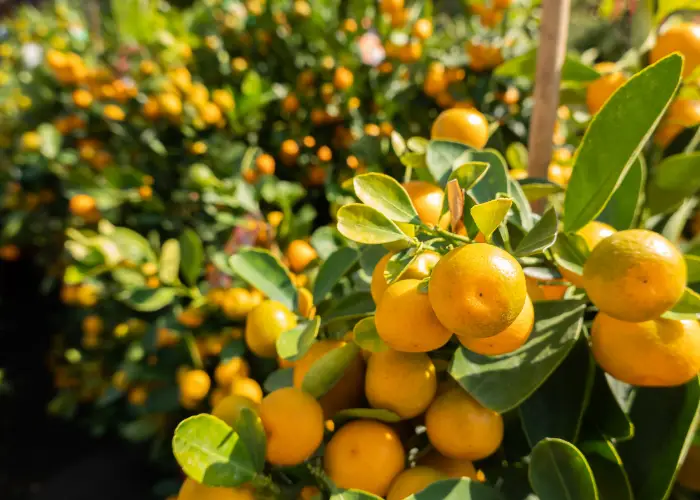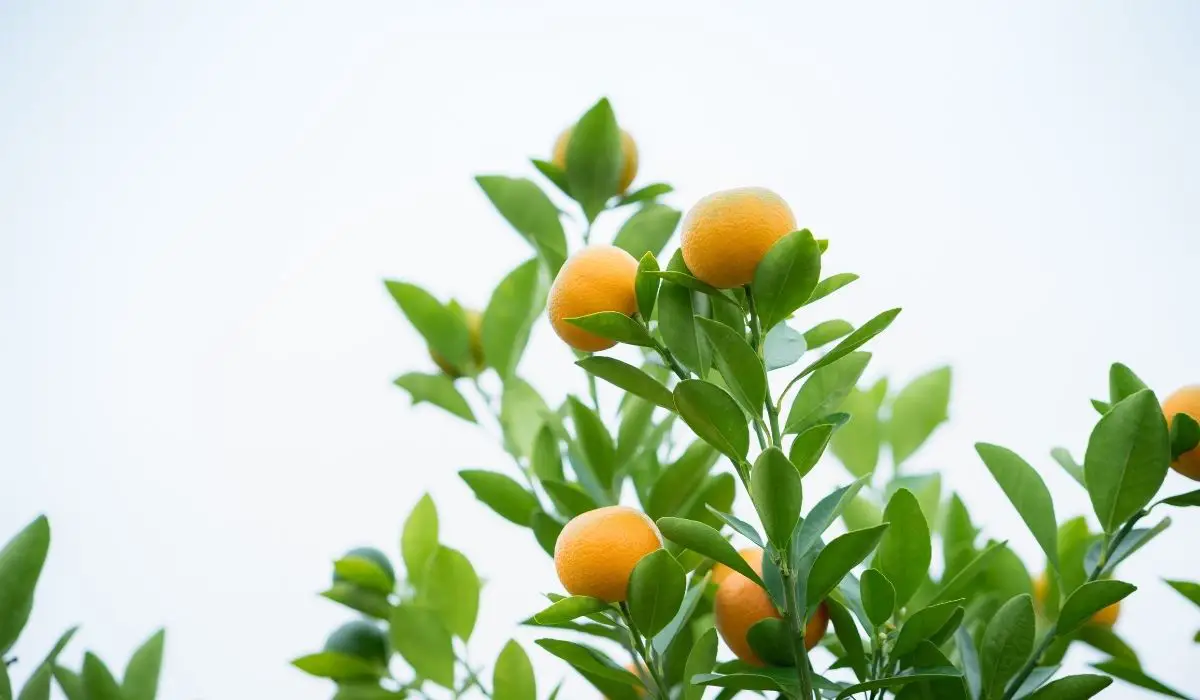Last Updated on December 6, 2021 by
A look at what does a kumquat tree looks like is essential for new gardeners who would like to grow this tree and enjoy its fruit.
Kumquat, Citrus japonica, is a small citrus fruit that grows in cool climates. It prefers cooler temperatures than other citrus plants.
This fruit is sweet and tart at the same time, best enjoyed without removing the peels. If you’re interested in growing kumquat trees, it is best to gather as much information as possible about this tree.
What Does A Kumquat Tree Look Like?
The kumquat tree is a small tropical tree. It has the advantage of bringing extreme attractiveness as a landscape plant both in the garden and a large patio container. This broadleaf evergreen tree has dark green glossy leaves and produces olive-sized fruits resembling a tiny orange. The citrus japonica tree is in the same genus as lemons, oranges, and similar fruit-bearing trees.
Kumquat trees have a moderate growth rate growing up to 24 inches each year. These trees can reach up to 6 to 8 feet high. It is best to start your kumquats plant in the spring. Early spring is the best time to transplant a sapling because there are higher chances of rain and lots of sunshine.
The kumquat trees, also known as kumquat plants, have small thorns compared to most citrus trees. Before they bear fruits, you will see dainty small white flowers that grow individually or in clusters inside the leaves.
The kumquat fruits have a vibrant color ranging from yellow to bright orange and can be round or oval in shape. They have sweet edible skin and slightly sour flesh when ripe.
Kumquat tree is self-pollinating and does not require you to grow multiple trees; one is enough.

What Does The Kumquat Tree Look Like – Features
The tree’s dimensions
This plant is considered a small tree or a large shrub. It usually grows between 2 and 5 m in height with a thin trunk diameter.
Their growth pattern
Kumquat trees have dense branches that create well-rounded crown shapes, more like a bit of pom-pom. If the tree is not in its fruiting season, the branches are covered with small thorns making it easy to identify it.
Their root system
Kumquat trees have a root system representing plants that grow in areas saturated by humidity in the air and moisture in the soil. These trees have the luxury of keeping their roots closer to the topsoil because they don’t need to go deeper in search of moisture reserves.
The bark
Kumquat trees have a light brown or grey or light brown or red-colored bark covered with very small and discreet vertical ridges, which are generally smooth.
The foliage
The kumquat tree is evergreen all year round regardless of the season or climate. The leaves are very dark green with a glossy shine. These leaves measure between 1 and 3 inches long and have a simple oval shape with pointed tips at either end. They are arranged on a twig in a beautiful spiral pattern.
Types Of Kumquat Trees And How They Look Like
The different types of kumquats out there include:
Round Kumquat (Citrus Marumi/Citrus Morgani)
Round kumquats are golden yellow in color and spherical. They have a sweet peel, and their flesh is much sourer. The round kumquats a major used to make spreads marmalades and jellies.
The round kumquat tree is a very popular bonsai cultivar and a common houseplant. This tree symbolizes good luck in China and is often given as a gift during the lunar New Year.
Oval Kumquat (Citrus Margarita/Fortunella Margarita)
Oval kumquat is oval and grows on the dwarf citrus tree, making them an ideal bonsai tree. This tree bears plenty of crops.
The fruit has very sweet skin and very sour flesh. These oval kumquats are most commonly eaten as fresh and whole. The skin has a slightly different color, green with yellow stripes.
Meiwa Kumquat (Citrus Crassifolia/Fortunella Crassifolia)
The meiwa kumquat is lesser edible than the cumquat varieties. It has a very thick skin and less flesh with too many seeds than any other type of kumquats.
Nagami Kumquat
This variety is a delectable type. It has rounded or bell-shaped fruits with very bright orange skin.
The fruits are very sweet and commonly used to make marmalades jellies or enjoyed raw. This tree has a high tolerance for cold and is frequently grown as an ornamental tree.
The Hong Kong Kumquat (Citrus Hindsii/Fortunella Hindsii)
The Hong Kong kumquat is not one of the best types for eating. Its fruits are very small and highly acidic with large seeds, little flesh, and thick skin.
This variety is mainly grown as ornamental plants or mostly found growing in the wild.
Malayan Kumquat
This variety is a kumquat hybrid creating a limequart. Its fruits are more prominent with more of a green-yellow color and thinner peels.
Final Thoughts
The kumquat tree is native to China, dating back to the 12th century. This tree has been cultivated all over Asia in places like India, Taiwan, the Philippines, and Japan. These trees were introduced to Europe in the mid-1800s and, after that, to North America.
The kumquat trees prefer USDA growing zones 9 and 10 and are the most cold-hardy trees of all the citrus families. Now that you know what a kumquat tree looks like, you can choose from any of the above varieties to grow.
Remember, Kumquat fruits must be harvested when ripe as they do not continue to ripen once picked. It is crucial to allow them to reach full maturity and ripeness while they are on the tree.
Don’t be impatient if this process takes longer than you expect. You would rather wait longer for them to ripen than harvest them unripe, only to throw them away.
The easiest way to tell if a kumquat is ripe is by the color of its skin. A ripe kumquat attains an intense and bright orange color, whereas unripe ones still hold a little bit of green or yellow in their rind.
Caroline is a gardener who loves to get down to the nitty–gritty of gardening. She proudly proclaims herself as a ‘dirt worshipper‘ and can often be found deep in the garden, covered in soil and singing to her plants. As a self–proclaimed ‘plant whisperer‘, Caroline believes that plants need love and attention just like any other living thing, and she loves to give them both. When she‘s not tending to her garden, you can often find her researching the latest gardening trends, or teaching others how to make their gardens thrive



